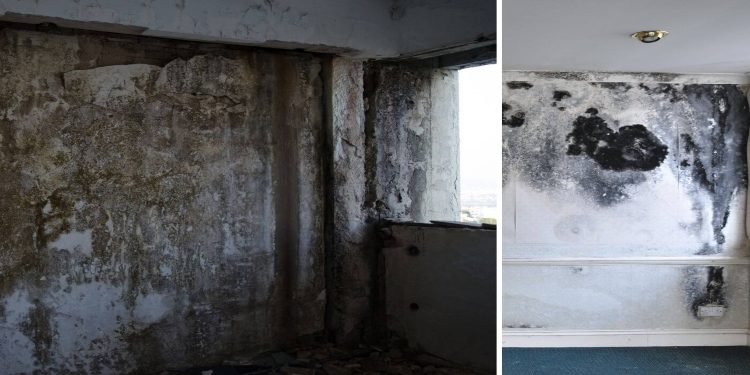Mold is more than just an unsightly nuisance; it’s a health hazard and a silent invader that can cause significant damage to both our homes and our well-being. Despite its common presence, many homeowners need to pay more attention to the importance of testing for mold. The reasons for conducting mold tests range from ensuring a healthy living environment to protecting the structural integrity of a property. As per a company for mold testing in Fort Lauderdale, following are the reasons why testing for mold should be on every homeowner’s radar.
Understanding Mold
Mold is a type of fungus that thrives in moist environments. It reproduces through tiny pores that travel through the air, invisible to the naked eye. When these spores land on a damp spot indoors, they may begin to grow and spread. While molds play a crucial role in nature by breaking down dead organic matter, they are not something you want growing inside your home.
Signs of Mold: Is Mold or is it Mildew?
The first step in addressing mold is being able to identify it. Many people confuse mold with Mildew, which is a surface-level fungus that appears as white or gray powdery spots. Mold, on the other hand, can come in various colors, such as black, green, or even pink. It may also have a fuzzy appearance and a musty odor.
Health Implications
One of the primary reasons to test for Mold is to protect your health and that of your family. Exposure to Mold can lead to various health issues, particularly for individuals with allergies, asthma, or compromised immune systems. Symptoms of mold exposure can include:
- Respiratory problems, such as wheezing, difficulty breathing, and chest tightness.
- Allergic reactions include sneezing, runny nose, red eyes, and skin rash.
- Asthma attacks in people with asthma who are allergic to Mold.
- Possible long-term respiratory damage in prolonged exposures.
Structural Damage
Mold doesn’t just affect your health; it can also cause significant damage to your property. Over time, Mold can eat away at wood, ceiling tiles, drywall, carpeting, and even insulation material. This deterioration can compromise the structural integrity of your home, leading to costly repairs. By testing for Mold early, you can address any issues before they escalate into major problems.
Where Do We Find Mold?
Mold thrives in warm, moist environments. It can grow indoors on almost any surface, including wood, paper, carpet, insulation material, and even food. However, Mold is most commonly found in areas of high humidity or dampness, such as bathrooms, kitchens, basements, and attics. To prevent mould growth in your home, it’s essential to keep these areas well-ventilated and dry.
Professional Testing and Remediation
If you suspect that your home may have a mold problem, it’s essential to seek professional testing and mold remediation services. Mold experts have the knowledge, experience, and equipment necessary to identify and remove all traces of Mold from your property effectively. They can also provide recommendations for preventing future mold growth.
The Dangers of DIY Mold Removal
While it may be tempting to try and remove Mold yourself, it’s generally not recommended. Cleaning up visible Mold with household cleaners does not address the underlying issue, and if not done correctly, it can spread spores and make the problem worse. Also, disturbed mold spores can cause health issues for those with allergies or respiratory problems. It’s best to leave mold removal to the professionals.
How to Test for Mold?
There are several ways to test for Mold, including:
DIY Mold Testing Kits
These kits allow homeowners to collect samples and send them to a lab for analysis. However, professional testing may be more reliable.
Professional Mold Inspection
Certified mold inspectors have the tools and expertise to conduct thorough inspections and testing. They can also offer advice on remediation and prevention strategies.
Preventing Mold Growth
The best way to deal with Mold is to prevent it from growing in the first place. Here are some tips for preventing mold growth in your home:
Keep humidity levels low.
Mold thrives in moist environments, so keeping indoor humidity levels below 50% can help prevent mold growth.
Fix leaks promptly
Leaky pipes or roofs can create the perfect conditions for Mold to grow. Be vigilant about fixing leaks as soon as they are discovered.
Improve ventilation
Proper airflow can help prevent moisture buildup and keep your home dry.
Clean regularly
Regularly cleaning and disinfecting areas prone to Mold, such as bathrooms and kitchens, can help prevent spores from growing.
Inspect for water damage.
Check your home regularly for any signs of water damage, such as discolouration or dampness in walls or ceilings. Address these issues promptly to prevent mold growth.
Remediation
If Mold is already present in your home, it’s important to address the issue promptly. Mold remediation involves removing the Mold and correcting any underlying issues that may have caused the growth in the first place. Here are some steps involved in effective mold remediation:
1. Identify the source:
The first step in remediation is identifying where the Mold is coming from. This could be a leaky pipe, a damaged roof, or even high indoor humidity levels.
2.Containment:
Before beginning the remediation process, it’s important to contain the affected area to prevent mold spores from spreading to other areas of the home.
3.Removal
The actual removal of the Mold can involve various methods such as scrubbing with specialized cleaners, using HEPA vacuums, and even physically removing affected materials like drywall or carpet.
4.Repair
Once the Mold has been removed, it’s important to repair any damage that the mold growth may have caused. This could involve replacing damaged materials or fixing leaks and ventilation issues.
5.Prevention
To prevent future mould growth, it’s important to address any underlying issues that may have caused the initial growth. This could involve fixing leaks, improving ventilation, or reducing indoor humidity levels.











































































